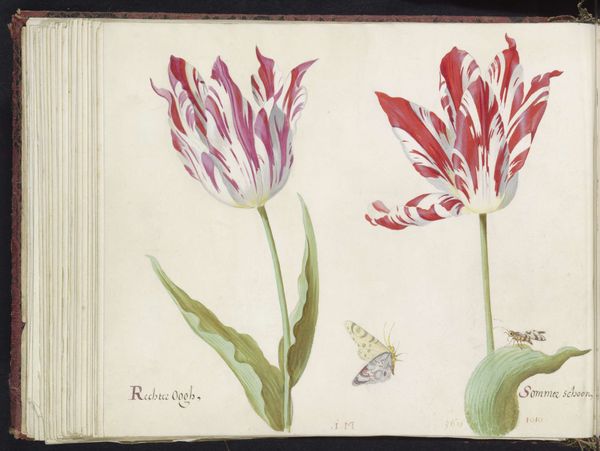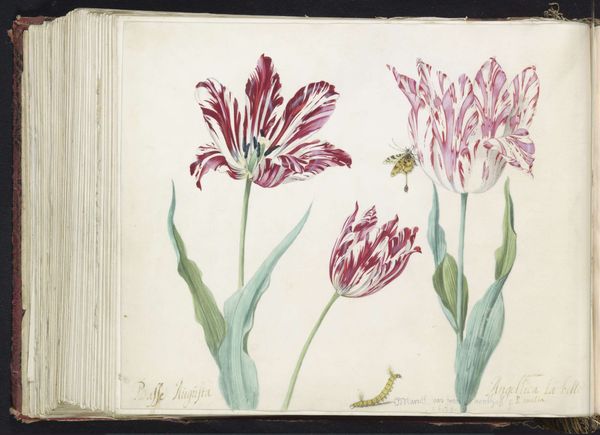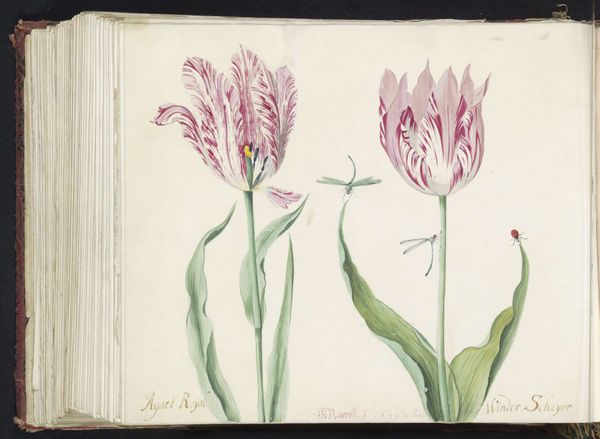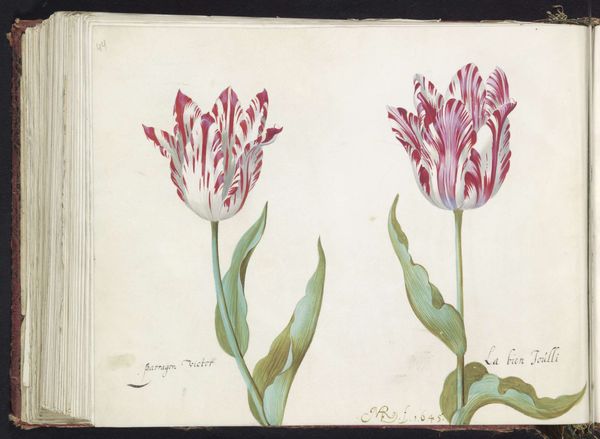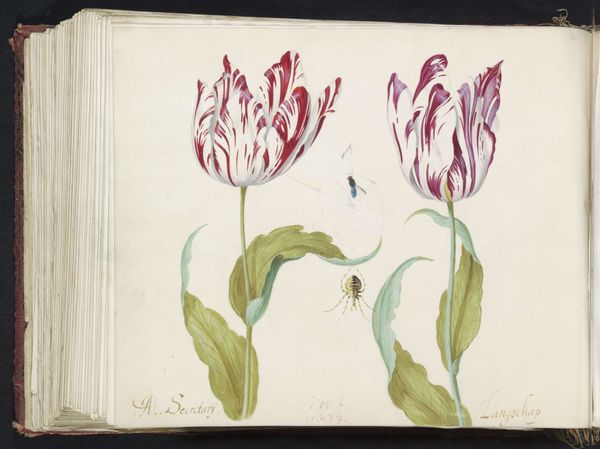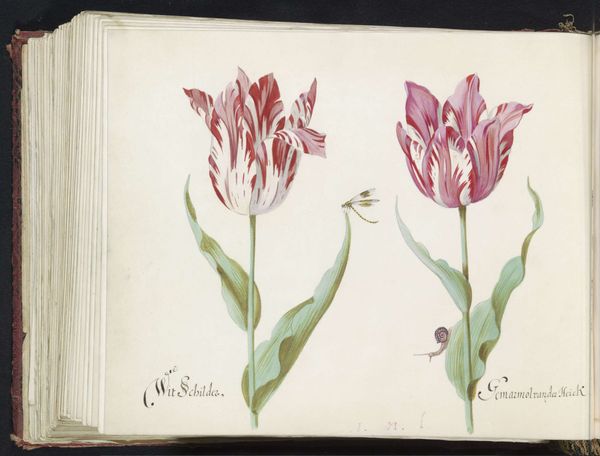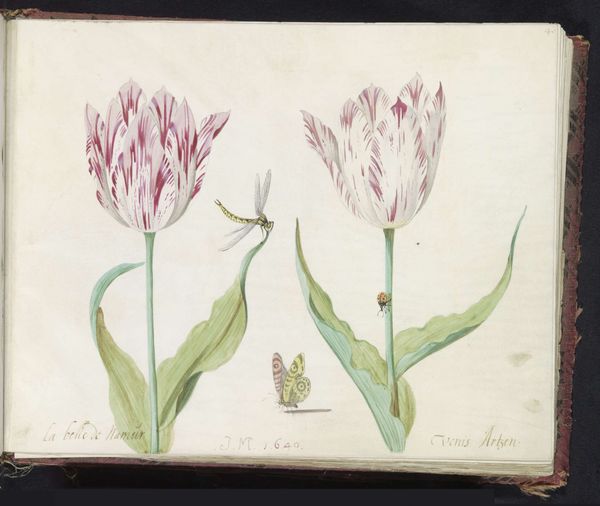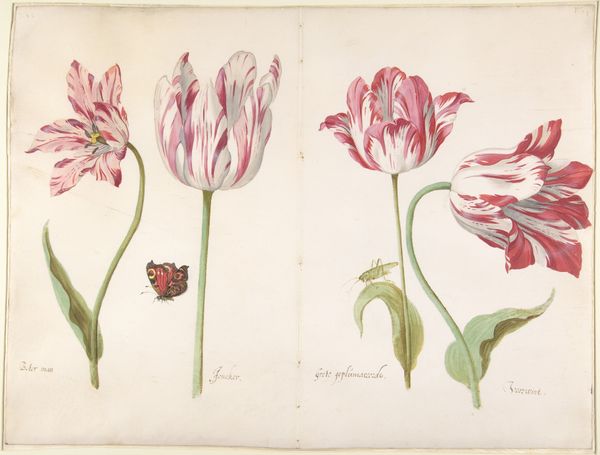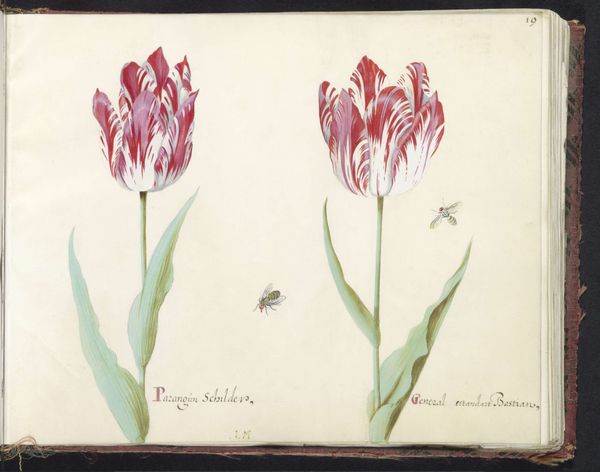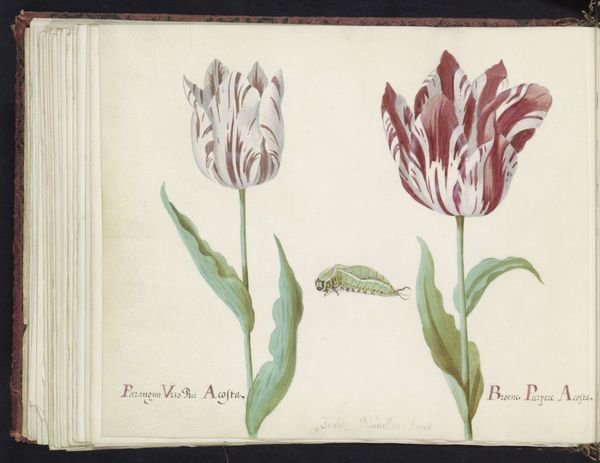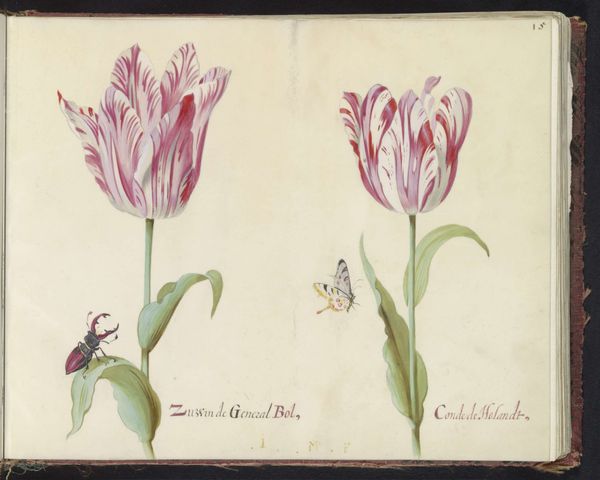
painting, watercolor
#
dutch-golden-age
#
painting
#
watercolor
#
coloured pencil
Dimensions: height 265 mm, width 335 mm
Copyright: Rijks Museum: Open Domain
Editor: This watercolor, "Two Tulips with Butterfly," created around 1637 by Jacob Marrel, offers such an intimate glimpse into the artist's observations. I’m curious about your interpretation of the piece. What details stand out to you when considering its historical context? Curator: Well, the image brings to mind the Dutch Golden Age's obsession with tulips, driven by what's known as "Tulip Mania". These weren’t just pretty flowers, they were commodities, intensely speculated upon. Do you notice anything specific about these particular tulips? Editor: Yes, the colors are very unique and unusual; especially the feathery, almost flame-like patterns on the petals, and one flower has a small butterfly on the same page. Were these variations highly prized? Curator: Exactly. These 'broken' tulips, displaying those striking color variations, were especially coveted. It’s due to a virus that causes this effect. Also note how carefully they are depicted with detailed annotations which were not just works of art but served as records for buyers. How might this intersect with your understanding of art and commodity? Editor: I see your point. The meticulous detail elevates it from just a botanical illustration to a valuable record, almost like a stock certificate for the bulbs themselves. This image wasn't just *of* value, it *represented* value within its culture! Curator: Precisely. And considering its location today in the Rijksmuseum, do you believe its status as art enhances, diminishes, or perhaps even ironically comments on its origins as an object of financial speculation? Editor: That is fascinating to ponder; understanding how an image becomes so much more when museums shape how we understand its importance, it shows its powerful shift from valuable commodity to historical treasure. Curator: Indeed, art can transform objects. Now you are seeing the intersection of socio-economic and artistic forces in historical image making.
Comments
No comments
Be the first to comment and join the conversation on the ultimate creative platform.
